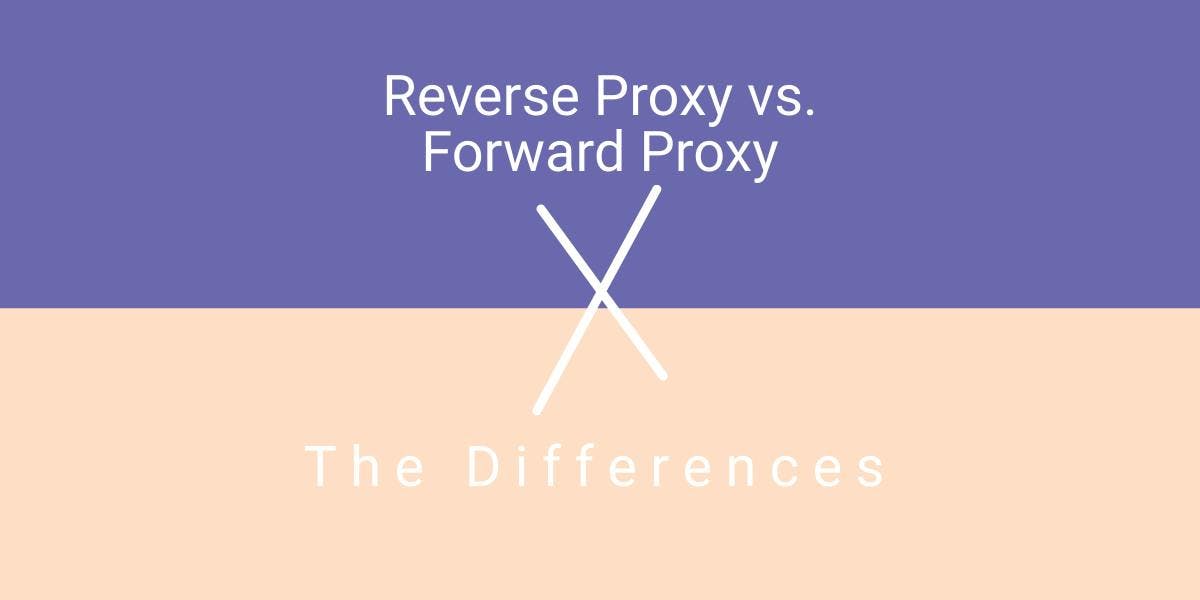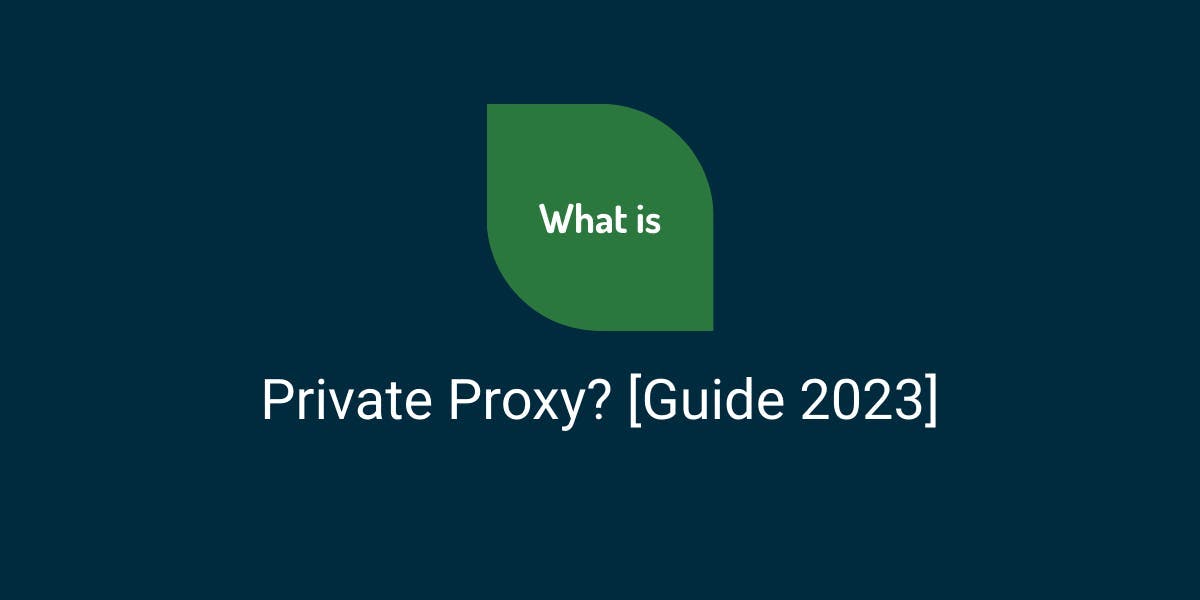Reverse Proxy vs. Forward Proxy: The Differences
Flipnode on May 10 2023

Proxies are typically intermediaries that stand between a user and a web server. However, there are several types of proxies that serve various purposes. In this article, we will explore the distinctions between forward and reverse proxy servers.
To begin, it's important to define what we mean by a forward and reverse proxy.
What is a forward proxy?
When referring to proxy servers, the most commonly mentioned type is a forward proxy. Essentially, a forward proxy acts as an intermediary between a user and the web server they wish to access. When a user sends a request, it goes through the forward proxy before reaching the web page. Once the data is retrieved from the internet, it is redirected back to the requester via the proxy server. From the internet server's perspective, the request appears to have been made by the proxy server and not the user. In addition, a forward proxy can cache information and use it to process future requests.
As a point of access and control, a forward proxy can improve user security within a private network, regulate traffic flow, and provide anonymity by masking the original IP address.
Types of forward proxies
Forward proxies come in various types, with the most popular ones classified by their origin. The two categories of forward proxies are residential proxies and datacenter proxies.
- Residential proxies are assigned a genuine IP address by an Internet Service Provider (ISP) with a physical location.
- Datacenter proxies on the other hand, aren't associated with an ISP, since their IP addresses come from secondary sources like data centers.
What are forward proxies used for?
Forward proxies serve various purposes for both individuals and businesses, including:
- Bypassing geographical restrictions. By using forward proxies, users can access content from other countries that are otherwise restricted based on their geo-location. This is especially beneficial for companies that offer ad verification services, as they can monitor ads across different regions. For instance, if a company wants to check if its ads are visible in Brazil, it can use a Brazil proxy or a Germany proxy to access content in Germany.
- Enhancing anonymity. A forward proxy server adds an extra layer of security that conceals the user's IP address and replaces it with its own. As a result, using forward proxy servers provides greater levels of anonymity and security.
- Web scraping. Web scraping is the most common use of proxies for businesses. Companies often collect data to improve their marketing, pricing, and other business strategies. Web scraping helps organizations stay competitive in the market.
In addition to the aforementioned uses, forward proxies can serve other purposes such as controlling and monitoring internet usage, creating and managing social media accounts, and many other functions.
What is a reverse proxy?
Reverse proxies are named as such because they function differently from forward proxies. Instead of mediating between clients and servers, reverse proxies are placed in front of backend servers to receive client requests and redirect them to the appropriate server. Reverse proxies offer increased security, speed, and reliability. They receive a request from a client, forward it to a server, and then send the response back to the client, making it seem like the initial request was processed by the reverse proxy. This ensures that users do not access the origin server directly, thereby providing anonymity to the web server.
Reverse proxies are particularly useful for service providers and websites with high traffic volumes. They can enhance website performance, safeguard web servers, and prevent overloading. Reverse proxies also facilitate load balancing, caching, and SSL encryption. Although reverse proxies may not be of significant interest to individual users or regular people, they are crucial for certain applications.
Types of reverse proxies
All reverse proxies have similar functionality, but two main types can be distinguished based on their features: regular reverse proxies and load balancers.
- Regular reverse proxies intercept the client request, direct it to the server for processing, and then send it back to the client. This type is mainly used for security purposes.
- Load balancers are a subtype of reverse proxy that directs traffic to multiple backend instances instead of just one. They can distribute traffic among multiple servers and manage communication between them, making them specifically tailored to evenly distribute the load and increase speed and performance.
What are reverse proxies used for?
Reverse proxies are utilized by websites and service providers for various reasons, such as:
- Load balancing: High-traffic websites may require reverse proxy servers to manage the incoming flow of traffic. By distributing the traffic between multiple backend servers, the website's capacity to handle requests is increased. If one server is overloaded or out of order, the traffic can be redirected to other servers, ensuring the site remains available. The website's engineers can even add more servers to the load balancer to improve capacity and performance.
- Caching: Reverse proxies can cache frequently requested data, such as pictures and videos, thereby speeding up website performance and reducing the load on internet servers.
- Anonymity and security: Reverse proxies serve as an additional layer of protection for backend servers by intercepting all incoming requests. This feature helps prevent malicious actors from abusing web servers by blocking suspicious traffic from specific IP addresses.
Forward proxy vs reverse proxy: the differences
A forward proxy and a reverse proxy differ in their usage, where a forward proxy is used by a client, such as a user within a private network, while a reverse proxy is used by an internet server. The location of a forward proxy can either be within the private network with the user or online.
Furthermore, there is another difference between these two proxy types, and it lies in their usage. As previously mentioned, forward proxies are commonly used for privacy purposes, accessing geo-restricted content, and web scraping, among other things. In contrast, web servers use reverse proxies to prevent overloading, enhance security against malicious entities, perform caching, SSL encryption, and more. Therefore, the main distinction between these proxies is that they are employed for entirely different tasks.
Can a forward proxy act as a reverse proxy?
To put it simply, a forward proxy server cannot serve as a reverse proxy server since they are designed for entirely different purposes. While their concepts may seem similar, forward and reverse proxies have unique software to perform their intended tasks, which includes IP addresses. Hence, it is not possible to utilize a forward proxy as a reverse proxy.
Conclusion
Forward proxies play a vital role in ensuring privacy and security while browsing the internet, accessing geo-restricted content, and web scraping, among other tasks. On the other hand, reverse proxies are essential for websites with high traffic to prevent overloading and are suitable for caching content and SSL encryption.
It is important to note that the primary difference between forward proxies and reverse proxies lies in their intended use. As they serve different purposes, they cannot be classified as the same type of proxies.



